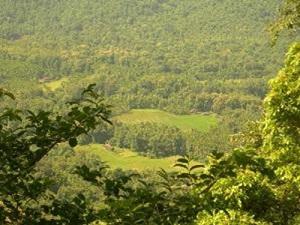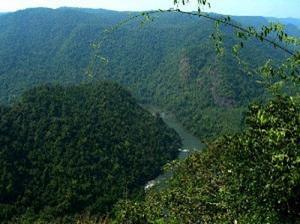Balachandra Hegde
The project would like to assess the human wildlife conflicts in the Tiger reserve and its neighbouring areas, to identify strategies to mitigate the problems. Landscape level analysis, field based assessment of problems, Participatory Rural Appraisal with stakeholders and spatial multi-criteria decision analyses are being planned in the proposed project.

Human settlements inside the Tiger Reserve.
Dandeli Anshi Tiger Reserve (DATR) with about 1100 sq. kms, one of the recent additions to Tiger reserve network of India. This Protected Area (PA) located in the Western Ghats, lie in the northernmost part of Tiger Conservation Landscape, designated as a global priority area for long-term tiger conservation. Together with seven other neighbouring PAs, the tiger habitats around DATR extend over 5,000 sq. km of deciduous and semi-evergreen forests which connected to larger forested corridor of Western Ghats landscape.

Kali landscape.
There are about 15,000 people living inside the protected area. Human–wildlife conflicts like crop damage by wildlife, preying on domestic cattle by tigers and leopards are common scene in the landscape. Besides there are incidents attack on local people by wild animals like sloth bear are reported.
This project, not only documenting the human wildlife conflicts, but also working for the implementing the practical, long-lasting solutions, based on the local knowledge.
We have been documenting the problems in landscape and identifying the critical links and habitats for long term conservation goals. We will assess all possible mitigation strategies involving all stakeholders into process, with more participatory methods. We will develop mitigation strategies which are practical to implement with space and time with clear responsibilities of stakeholders.
Crop damage by wildlife leads maximum conflicts. Since most of the villages are surrounded by forests, and valleys are cultivated, which are sources of perennial water sources, conflicts are natural. Wildlife attacks on human beings are also reported once in a while.
Unlike imposing the new strategies which are new to the areas, we will document and promote the best practices existed among local people for mitigating the problems. Developing the ‘live fence’ will be promoted to reduce the crop damage by wildlife. Traditional system of live fence’ existed among the villagers will be rejuvenated and will be supported.